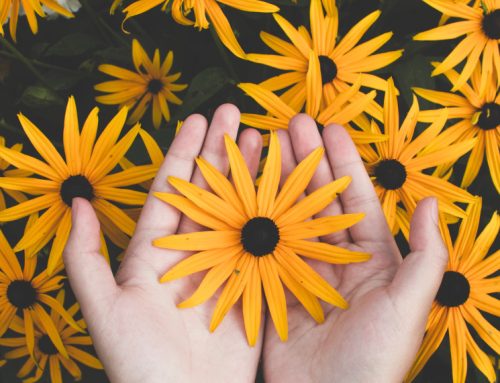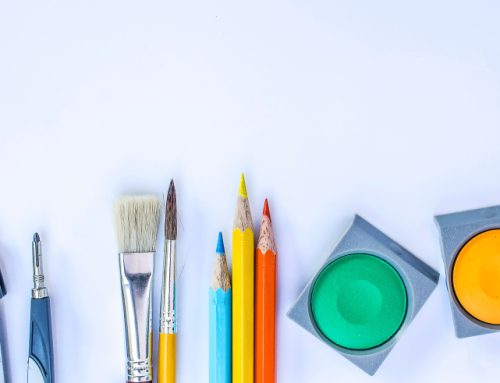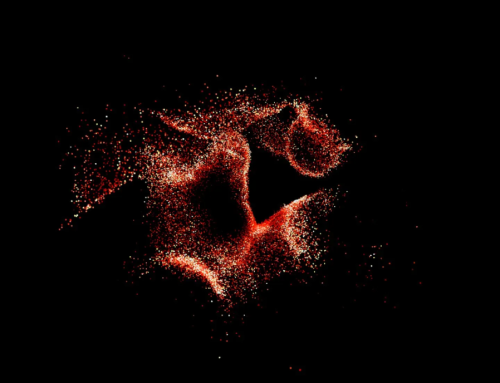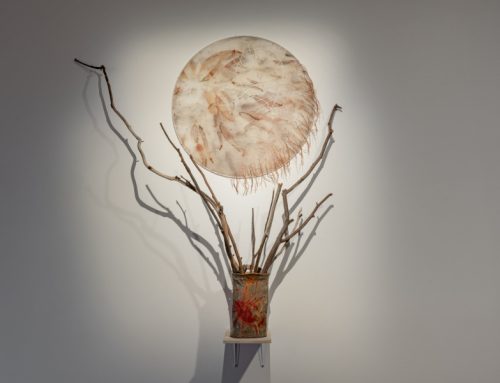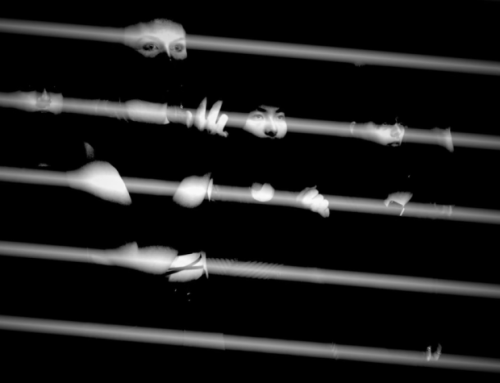Jane Cavanough is a sculptural artist who concentrates on creating public art and memorials. She has a background in landscape design and visual arts and her work is featured extensively around the country. Jane’s work, Trees of Hippocrates was created as part of the Westmead Redevelopment project and sits in the front of the Central Acute Services Building (CASB).

Trees of Hippocrates, 2020
The Westmead Redevelopment recently launched its arts and culture strategy, aimed at transforming experiences at Westmead through the arts across healthcare, education, training and research.
Her sculptural work Trees of Hippocrates forms a protective embrace around two original cuttings from the Tree of Hippocrates in Greece. The trees are descendants of the original Tree of Hippocrates in Greece, where legend tells us the ‘Father of Medicine’ Hippocrates taught his pupils under the tree’s branches.
Two trees, one for Westmead Hospital and one for The Children’s Hospital at Westmead, were propagated from the University’s Tree of Hippocrates at Dubbo and donated for planting in the new Central Acute Services Building (CASB) forecourt.
Your work largely involves creating sculptural pieces for public art, particularly artworks which relate to place making. As an artist, why do you think you are drawn to this type of work?
When a young landscape architect working in Manchester I attended an environmental sculpture conference with people like Andy Goldsworthy – it sparked my passion which had always been to go art art school…..when I left art school I organized a few environmental sculpture events in centennial park, and then Julie Marler asked me to do some interpretive place making designs for sculpture in the centennial park wetlands – after that I could see the way forward to making a living, using my skill set working with design teams, exploring environmental connections and making work that would last 25 years that people can touch.
How would you describe to others what you do and the role of art?
I call myself an urban sculptor, making art for parks, playgrounds and urban settings. I think art in public places is a wonderful way of adding layers of meaning to place, to provide a bit of quirkiness and personal expression
Why do think it’s important to have art and art making within the health context?
From my professional point of view, Art within the health context needs to be one part of a wider spectrum of design.
One example is in hospitals. A hospital environment is bland and not good for one’ s emotional sense of being, even when you are a visitor.
The interiors are so depressing even in new hospitals, and with very few places to look out onto a tree or to even see the sky.
My sister died from melanoma when she was 38 – it has been the hardest thing for me to deal with in my life and 20 years later I still miss her and tell her that I love her! When she was dying, we spent a great deal of time in hospitals.
Hospitals don’t do “wellness” in their designs – it would have been so great to have been able to take her outside into a garden setting, where there are living things to connect with, and within the garden context, artworks would be the icing on the cake.
Is this a problem with the architects, the client or the budget? In design thinking, the emphasis is problem solving from the user’s perspective. I am sure if the patients, staff and visitors were consulted in hospital design, the brief and end results would be totally different.
Art in the health context – I know there are art programs within hospitals but I have not had first-hand experience with them
Art practice sits within a health context though – at art school there was a spectrum of all the weird and wonderful – it was a very creative and stimulating place to be – one of the best times of my life.
When TAFE shut down its creative courses, it was a huge loss, as artmaking is totally immersive, and great for the soul – and some people need this for emotional well-being.
Tell me a little bit about yourself and how you came to be involved with the Westmead Redevelopment Arts and Culture Strategy at the Westmead Health Precinct
Marily Cintra from Health Arts and Research Centre.
HARC has obviously played an enormous role in including art within the health environment. The Westmead Hospital Redevelopment program has worked with the Architects and Tract Landscape architects to embedded artist designed seats, tree guards and artworks into the design of the outdoor area, although I must say this area is not as large or personalized as it could be.
I have always preferred to make artwork for the public environment, because I want the work to have legacy, longevity and interaction. It is about people and place.
My artworks are fabricated by a dedicated group of specialist artisan fabricators and bespoke manufacturers from a brand palette of materials including glass, LED lighting, forged, stainless and mild steel, cast concrete, stone, timber, mist and water.
I am passionate about creating work which shows the the relationship between people, sculpture and landscape. And also, interpreting the environmental and cultural aspects of each project site.

Trees of Hippocrates, 2020
How did you go about creating your piece Trees of Hippocrates? What was your process?
Two tree guards are inspired by the structure of DNA, composed of two chains that coil around each other to form a double helix carrying the genetic instructions used in the growth, development, functioning and reproduction of all known living organisms.
The designs also offer protective embrace, inspired by the phrase First, do no harm. This relates both to the non-malevolent maxim of the Hippocratic oath and also to the functional requirement of needing to protect the Trees of Hippocrates.
I wanted to reflect the protective quality of the phrase in the Hippocratic Oath, `first, do no harm’, which was the starting point to my entire design process,
“It was important to instil this throughout the development, ensuring the ethical understanding of the 17th century statement formed the basis of my work.”
While this shaped the foundation of her art, Jane was also deeply influenced by DNA molecules and its coil and pattern
As the artist, do you think it’s necessary for those who view and interact with your work to understand the meaning/concept? Why or why not?
No, I don’t think it is necessary – there is a lot about the world we don’t understand but we still appreciate it.
People will read many interpretations into a work – it does not need to be prescriptive – actually the times I have had trouble designing a work is when the client has been too prescriptive and it deadens my creative impulse.
What other pieces have inspired you? And why?
I think Jennifer Turpin and Michalie Crawford’s work is incredibly inventive and beautifully detailed, in their interaction with water and wind.
I am really excited by Ellesworth Kelly’s abstract paintings at the moment – I love his reduced use of form and brilliant combinations of colour. They make me happy.
Have you ever gone back to your past work to observe the public interacting with your sculpture? If so, how has this experience informed your future work?
The project I have seen most interaction with is my first one in Centennial Park – it needs an upgrade, and I don’t know if it still intact, but I used to get a real thrill seeing kids clambering all over the smaller elements.

Touchstones 2011
I have also been told that my Touchstones are very well loved outside Bankstown Arts Centre – people peer into the work, I guess to see how it is made.

Endemic 2012
I am told that locals dress the Kangaroos, called Endemic, for Xmas – that gives me a buzz.

Natus Ex Igne 2020
And my most recent project, which I am very pleased with, called Natus Ex Igne, is located in the forecourt of a new multi dwelling apartment development called Arkadia ( Alexandria) that has won lots of awards. The work was originally designed to have people moving into it and crawling through it, but the design had to be modified for public safety.
I don’t think the designed suffered though, as three large rusty steel cones have apertures of glass that feature digital designed into the surface of the glass and are lit internally with LED’s – the work has a beautiful resolution in terms of scale, context and materiality.
As an artist, how do you use art for your personal health and well-being? Is making your own artwork enough or do you need to seek out other forms of art?
Art is very low on the spectrum of cultural appreciation in Australia – very different for instance in Europe. It is difficult to make you living being an artist and I sometimes think I should describe myself as a gambler rather than an artist, because now, with every project I apply for, the client mostly asks for a concept, which not only takes ages to think about, but also requires 3d illustration, for which I pay someone….and this is expensive – I’m not sure how many professions require the answer to the question before contracting them – and this really gets me down.
I knew that if I stayed being a landscape architect I would end up depressed and unsatisfied. The fact remains, I love what I do, and it never feels like work.

Garden Art

Birds on Spike

Side of the Road, Bundanoon to Exeter
More recently I have been making smaller sculptures for the garden, and it is really exciting to get back into the workshop again – because all my large public works are made by professional fabricators.
I am making a series of works inspired by the seasons, that utilize wind for movement, colour and form – specifically designed for small spaces.
A little bit about Jane Cavanough and Trees of Hippocrates

Trees of Hippocrates 2020
Jane Cavanough has degrees in both Landscape Architecture and Visual Arts.
She has won a slew of awards over her career including in 2020 two NSW Architecture Awards and two NSW Landscape Architecture Awards.
Jane’s project forms part of the Westmead Redevelopment Arts and Culture Strategy which aims to help improve the health, wellbeing and experience of all visitors to the Westmead Health Precinct.
The Arts and Culture Strategy brings together partners from Westmead Hospital, The Children’s Hospital at Westmead and the University of Sydney.
The strategy – a partnership between Western Sydney Local Health District, the Children’s Hospital at Westmead and the University of Sydney – is designed to embed arts and culture into the fabric of the Westmead precinct, including its new hospital building and refurbished spaces.
The renown blacksmith Glenn Moon based in Braidwood hand-forged The Trees of Hippocrates from stainless steel. The choice of material was chosen for its longevity, colour and relationship to the surrounding buildings and landscape.
Jane says she specifies a hand forged stainless steel, that comes out of the forge with a micaceous grey finish that weathers to a rust coating, requiring no maintenance and many decades of longevity.
Jane says the interlinking embraces of the bends and bands of the steel were individually hand-pressed, leaving behind unique patterns within the steel you won’t see anywhere else. The protective barriers her work forms around the Trees of Hippocrates is a powerful context in healthcare, the future of the community and the connection to the Westmead Health Precinct.”
“The longevity means the steel will stand the test of time, hopefully like that of the original Tree of Hippocrates in Greece, planted over 2400 years ago!”

